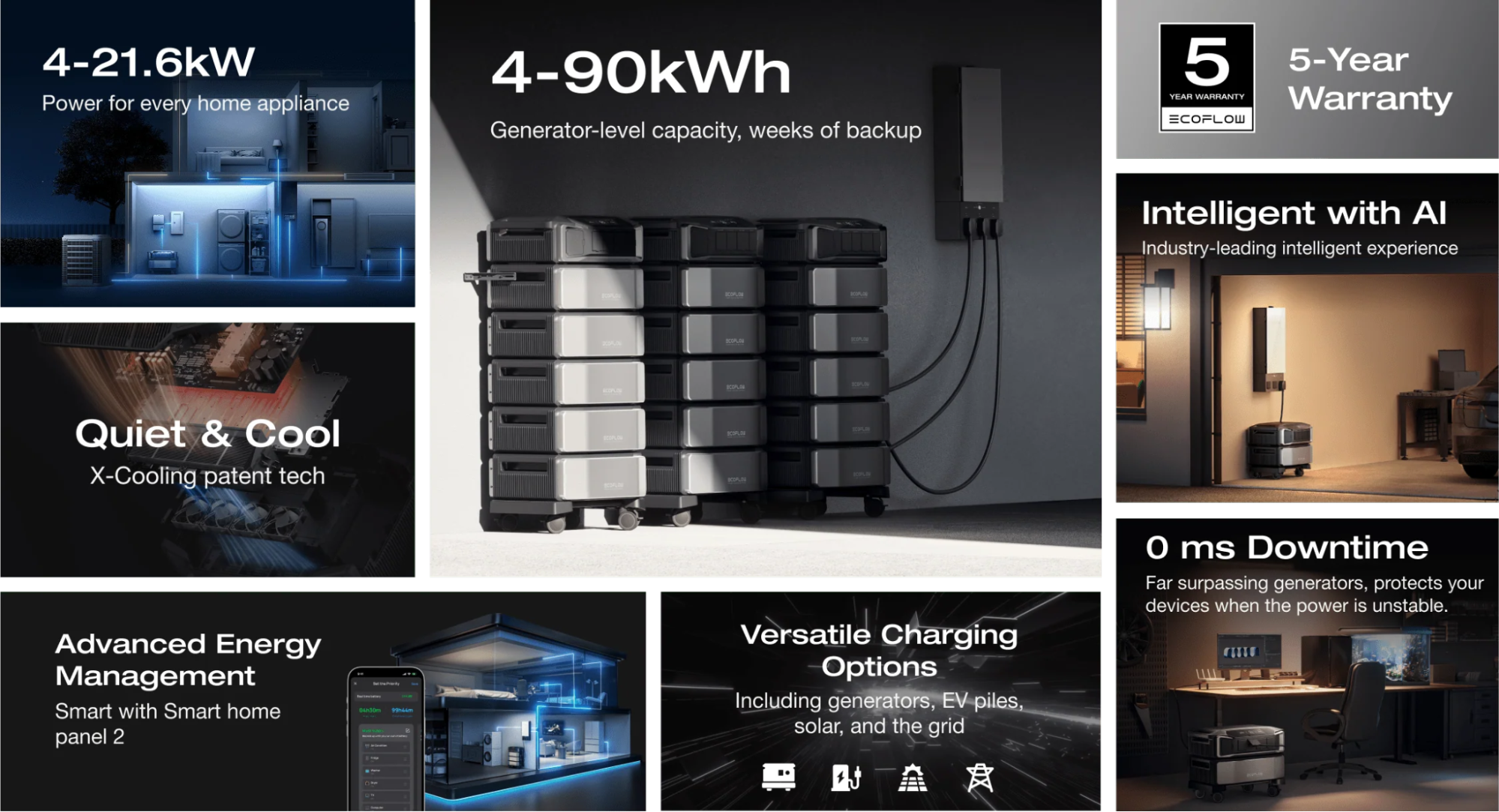Power outages don’t discriminate. Whether you live in a small downtown apartment or a spacious rural farmhouse, losing electricity can disrupt daily life. But the right backup solution looks different depending on where you live. This guide explores practical options that actually work for different living environments—and how modern battery systems, including whole home battery backup, are changing the game.
The Unique Needs of City Apartments
City dwellers face specific challenges when it comes to backup power.
- Space limitations: Apartments rarely have garages or basements where large systems can be installed.
- Noise sensitivity: Neighbors in close quarters won’t tolerate the roar of a gas generator.
- Restrictions: Many buildings and city ordinances prohibit fuel generators due to fire and safety risks.
Best solutions for apartments:
- Portable battery stations: Compact, plug-and-play units that can power essentials like lights, Wi-Fi, and laptops.
- Wall-mounted battery systems: Slim units designed for limited spaces that provide more capacity than portables while staying discreet.
For urban households, clean, silent systems are the only realistic choice. Even small-scale battery backup can make a big difference during short blackouts.
Suburban Homes: Balancing Comfort and Cost
In the suburbs, families often enjoy more space and higher power needs. Outages may last longer than in cities, but utility crews can usually restore service within a day or two.
Key considerations for suburban homes:
- Moderate energy demand: Refrigerators, HVAC systems, entertainment, and work-from-home setups.
- Independent electrical panels: Easier integration for partial or whole-home backup.
- Flexible budgets: Families may balance cost with comfort, choosing systems that cover both essentials and conveniences.
Best solutions for suburbs:
- Mid-capacity battery systems (20–40 kWh): Enough to keep refrigeration, partial HVAC, lighting, and electronics running for a day or two.
- Solar + battery integration: Pairing panels with backup batteries reduces reliance on the grid and saves money even when there isn’t an outage.
- Expandable options: Modular systems allow families to start small and add capacity later.
For many suburban households, this is where a whole home battery backup makes the most sense—balancing comfort, reliability, and long-term value.
Rural Homes: Preparing for Long Outages
In rural areas, the stakes are higher. Power lines stretch for miles, and outages can last days or even weeks after storms or heavy snow. Fuel supplies may also be harder to access, making traditional generators less dependable.
Challenges in rural living:
- Greater exposure to extreme weather.
- Longer utility response times.
- Higher daily energy use, including well pumps, freezers, and farm equipment.
Best solutions for rural homes:
- High-capacity modular battery systems (60–90+ kWh): Capable of powering large homes and multiple appliances for several days.
- Solar integration: Strong solar input allows for daily recharging, ensuring sustainable energy independence.
- Hybrid configurations: Combining batteries with smaller fuel generators can provide maximum flexibility, though fuel dependence should be minimized.
For off-grid or remote properties, a whole home battery backup combined with solar panels can deliver reliable power with minimal external dependence. This setup can truly make a rural home self-sufficient.
Comparing Fuel Generators and Battery Systems Across Locations
- City apartments: Fuel generators are not an option—portable and wall-mounted batteries are the only safe, legal, and practical choice.
- Suburban homes: Both fuel and battery systems are technically feasible, but batteries offer cleaner, quieter, and smarter operation.
- Rural homes: While fuel generators may seem attractive, fuel shortages and maintenance issues make batteries plus solar far more sustainable in the long run.
In every case, battery systems come out ahead for families who value safety, convenience, and future readiness.
Choosing the Right Backup for Your Lifestyle
When selecting a backup solution, consider these factors:
- Budget: Portable batteries are the cheapest, while whole-home systems require higher upfront investment but save more over time.
- Energy demand: Match system size to your essential loads—fridge, lights, HVAC, and communications.
- Available space: Apartments call for compact systems, while suburban and rural homes can house larger units.
- Local regulations: Many municipalities ban fuel generators, making battery backup the default choice.
- Growth potential: Choose modular systems that can scale with future needs, including EV charging or additional solar.
Quick guide:
- Apartment → Small portable or wall-mounted battery backup.
- Suburban → Mid-capacity systems, often paired with solar.
- Rural → Large-capacity whole home battery backup with solar integration.
The Future of Backup Solutions
Backup power is no longer just about surviving outages—it’s about smarter, more efficient energy management.
- Shift away from fuel: Regulations, environmental awareness, and convenience are driving a move toward batteries.
- Policy incentives: Tax credits, rebates, and utility programs make battery installations more affordable.
- Smart energy management: AI systems already optimize charging, discharging, and integration with smart home devices.
- Virtual power plants (VPPs): In the near future, homeowners may earn money by feeding stored energy back into the grid.
From apartments to farms, the future clearly belongs to battery systems.
Conclusion
Every home has unique backup needs, but there’s a solution for everyone. From compact batteries for apartments to whole home battery backup systems for suburban and rural households, clean and quiet energy storage offers reliable protection. As power grids evolve and outages become more frequent, choosing a modern battery system isn’t just about surviving the next storm—it’s about building a safer, smarter, and more independent home.






